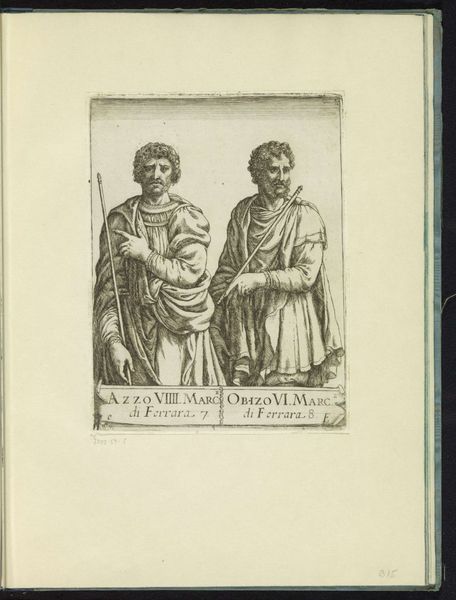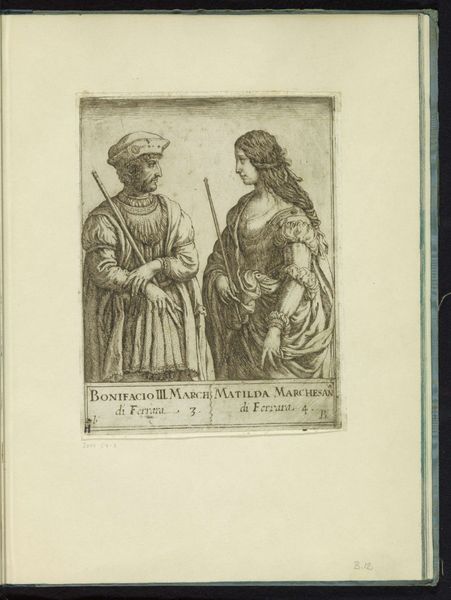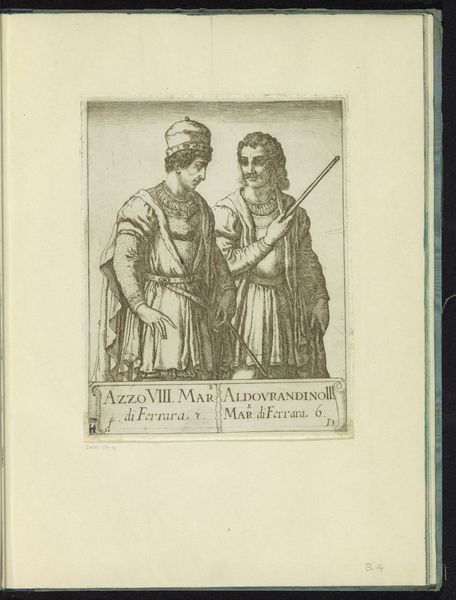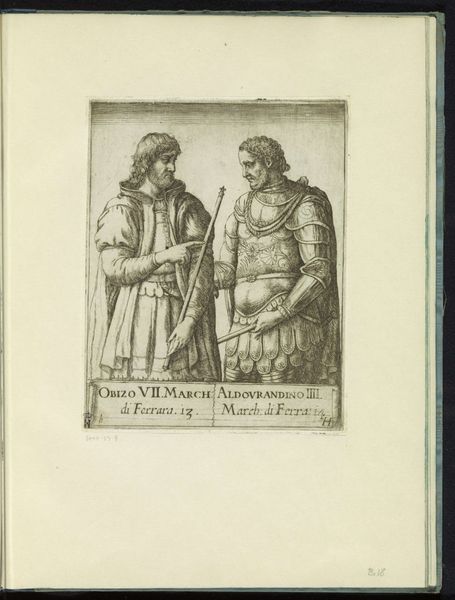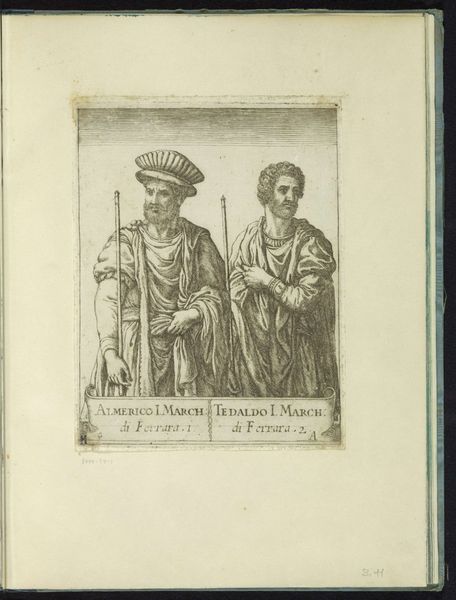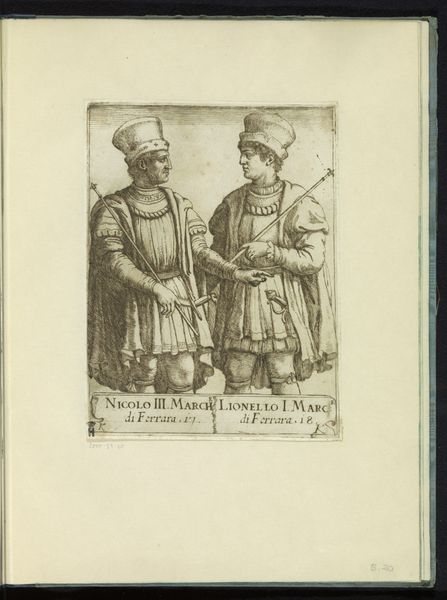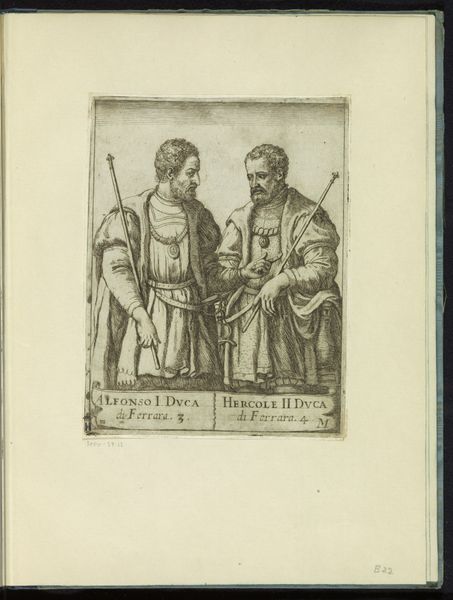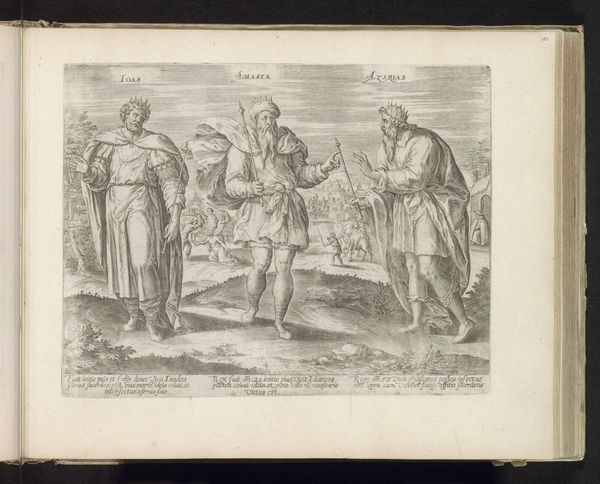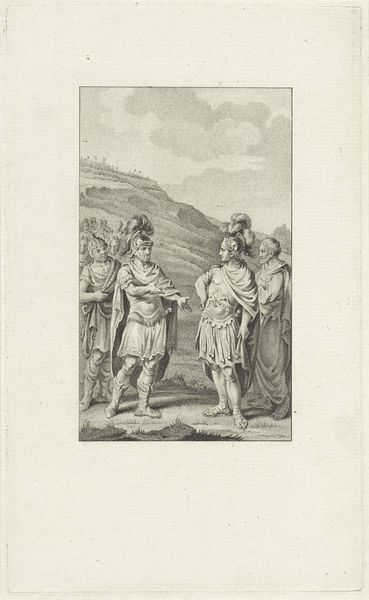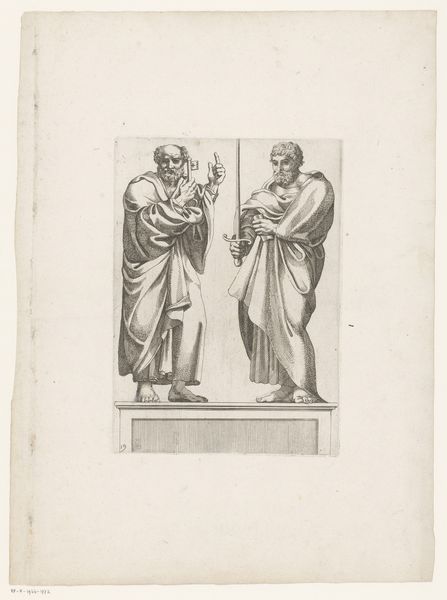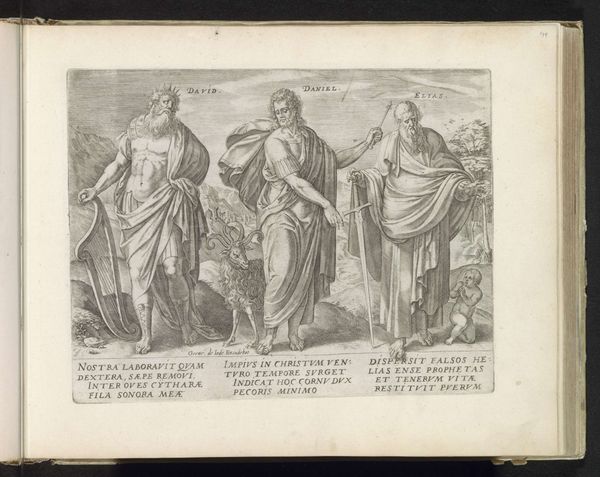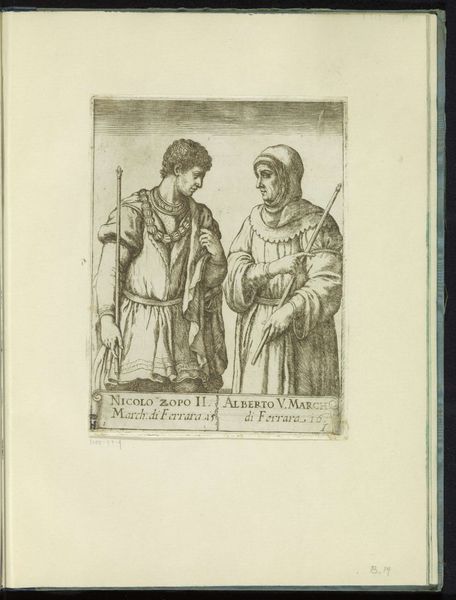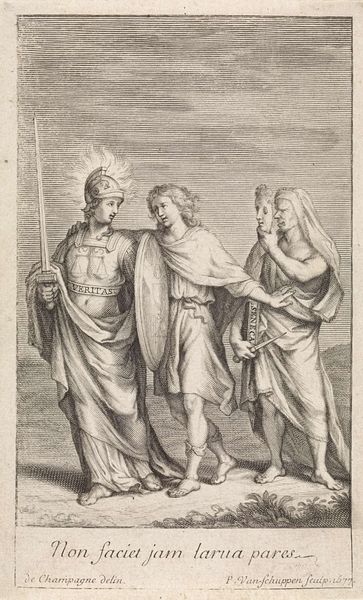
Dubbelportret van Azzo XI d'Este en Rinaldo III d'Este, markiezen van Ferrara 1641
0:00
0:00
print, engraving
#
portrait
#
baroque
#
pen drawing
# print
#
pen illustration
#
pen sketch
#
pencil sketch
#
old engraving style
#
figuration
#
personal sketchbook
#
pen-ink sketch
#
line
#
pen work
#
sketchbook drawing
#
history-painting
#
engraving
#
pencil art
Dimensions: height 184 mm, width 141 mm
Copyright: Rijks Museum: Open Domain
Editor: So, here we have Caterino Doino's 1641 engraving, "Dubbelportret van Azzo XI d'Este en Rinaldo III d'Este, markiezen van Ferrara" which translates to “Double Portrait of Azzo XI d’Este and Rinaldo III d’Este, Marquesses of Ferrara.” The figures are so meticulously rendered in the print; it feels incredibly formal, almost austere. How do you interpret this work? Curator: It's interesting to consider this piece within the context of 17th-century power dynamics. What do you notice about their poses, their clothing? How do those choices reflect or subvert the power structures of their time? Are we seeing an idealized version of nobility here, or something more complex? Editor: I see the official roles but they also feel individualized. It's like Doino tried to show both their public personas and perhaps some hints of their humanity. But does the medium—an engraving—limit that, compared to say, painting? Curator: That's a great question. The very act of creating a print makes this image more accessible, reproducible. Who was the intended audience? And how does that accessibility affect the way we understand the power they wielded, especially given the d'Este family's complex relationship with the Church? We could also look into who was the audience of such printed images in the context of power relations and representation in the Baroque Era? Editor: So it is an exercise in balancing the private and the public, and accessibility, too. Thank you. Curator: Indeed. Thinking about how historical figures are presented to the public helps us understand the broader narratives and ideologies at play in their time.
Comments
No comments
Be the first to comment and join the conversation on the ultimate creative platform.
